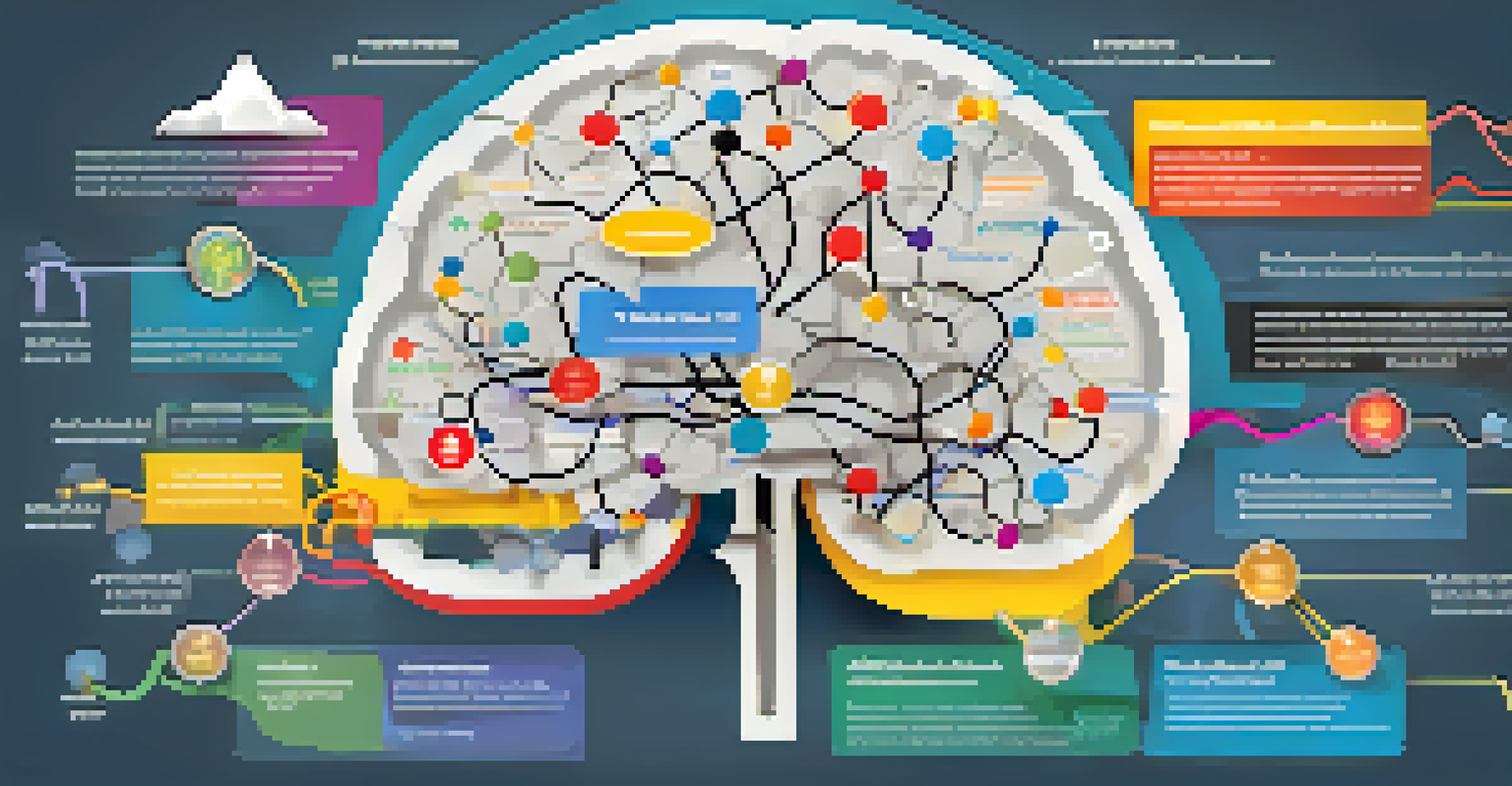Neuroscience of Learning in Special Education Settings

What is Neuroscience and Why Does it Matter in Education?
Neuroscience is the study of the nervous system, including the brain's structure and function. Understanding how the brain learns can significantly impact educational strategies, especially in special education settings. By applying neuroscience principles, educators can create tailored learning experiences that meet the unique needs of their students.
The brain is a world consisting of a number of unexplored frontiers.
For instance, knowing how different brain regions contribute to learning allows teachers to design activities that engage these areas effectively. This becomes crucial for students with learning disabilities who may process information differently. Ultimately, this knowledge empowers educators to foster an inclusive environment where all students can thrive.
Moreover, utilizing neuroscience in education not only enhances teaching methods but also promotes a deeper understanding of students' challenges. By recognizing the neurological underpinnings of their learning differences, teachers can adopt a more empathetic approach, leading to improved student outcomes.
The Role of Neuroplasticity in Learning
Neuroplasticity refers to the brain's ability to reorganize itself by forming new neural connections throughout life. This concept is particularly important in special education, as it highlights that learning is always possible, regardless of a student's challenges. For example, consistent practice and targeted interventions can help students develop skills they initially struggle with.

Consider the case of a child with dyslexia; through specialized reading programs designed with neuroplasticity in mind, they can retrain their brain to improve reading abilities. This adaptability shows that with the right strategies, students can overcome obstacles and enhance their learning experiences. This is a hopeful message for educators and parents alike.
Neuroscience Enhances Education
Understanding how the brain learns allows educators to tailor strategies for diverse learning needs.
Additionally, fostering an environment that encourages neuroplasticity can lead to more significant educational gains. Activities that promote critical thinking, creativity, and problem-solving can stimulate brain activity, thereby enhancing learning potential. Thus, understanding neuroplasticity is a game-changer in special education.
How Emotions Influence Learning in Special Education
Emotions play a pivotal role in how we learn and retain information. In special education settings, students may experience a range of emotions that can either facilitate or hinder their learning processes. For instance, anxiety can negatively impact a student's ability to focus, whereas positive emotions can enhance engagement and motivation.
Education is not the learning of facts, but the training of the mind to think.
Teachers can harness this knowledge by creating a supportive classroom environment that acknowledges and addresses students' emotional needs. Activities that promote social-emotional learning (SEL) can help students manage their feelings, leading to better learning outcomes. This approach not only aids academic performance but also supports students' overall well-being.
Moreover, building strong relationships between educators and students can help foster a sense of safety and belonging. When students feel valued and understood, they are more likely to take risks in their learning. This emotional support is especially crucial for students in special education, as it can significantly influence their academic journey.
The Importance of Multisensory Learning Techniques
Multisensory learning involves engaging more than one sense at a time to enhance the learning experience. This approach is particularly effective in special education, where students may benefit from varied methods of information delivery. For example, combining visual aids, auditory elements, and tactile experiences can help reinforce learning concepts.
Imagine teaching the alphabet through a combination of songs, letter blocks, and writing exercises. This method caters to different learning styles and can significantly improve retention and understanding. By appealing to various senses, educators can create a richer learning environment that resonates with all students.
Neuroplasticity Supports Learning
The brain's ability to reorganize itself highlights that consistent practice can help students overcome challenges.
Additionally, multisensory techniques can help bridge gaps in understanding for students with learning disabilities. When information is presented through multiple channels, it aids in creating stronger neural connections, making learning more effective. This strategy not only promotes inclusivity but also enhances overall educational experiences.
Creating an Inclusive Learning Environment through Neuroscience
An inclusive learning environment is one where all students, regardless of their abilities, feel valued and supported. Neuroscience can guide educators in creating such spaces by informing them about different learning needs and how to address them. By understanding the diverse ways in which students learn, teachers can modify their approaches to be more inclusive.
For instance, incorporating flexible seating arrangements and varied instructional methods can accommodate different learning preferences. This adaptability allows students to engage in ways that resonate with them, promoting a sense of belonging. When students feel included, they are more likely to participate actively in their learning.
Moreover, fostering an inclusive environment not only benefits students with special needs but enhances the educational experience for everyone. By celebrating diversity and promoting collaboration, educators can cultivate a classroom culture that values different perspectives. This approach ultimately leads to a richer, more engaging learning experience for all.
Understanding Executive Functioning and Its Impact on Learning
Executive functioning refers to a set of cognitive processes that help us plan, focus attention, remember instructions, and juggle multiple tasks. These skills are crucial for effective learning, but many students in special education may struggle with them. Understanding the role of executive functioning can help educators tailor their strategies to support these students better.
For example, implementing visual schedules and breaking tasks into smaller, manageable steps can aid students who have difficulty with organization and time management. By providing clear frameworks, educators can help students navigate their learning more effectively. This structured approach not only enhances academic performance but also fosters independence.
Emotions Affect Learning Outcomes
Creating a supportive environment that addresses emotional needs can significantly improve student engagement and performance.
Furthermore, teaching executive functioning skills explicitly can empower students to take control of their learning. Techniques such as goal setting and self-monitoring can help students develop these essential skills over time. By focusing on executive functioning, educators can provide students with tools that will benefit them well beyond the classroom.
Implementing Evidence-Based Strategies in Special Education
Evidence-based strategies are teaching methods that have been proven effective through research and practice. In special education, implementing these strategies can significantly improve student outcomes by addressing specific learning needs. For example, using data-driven approaches allows educators to identify what works best for their students.
Consider the use of Applied Behavior Analysis (ABA) techniques for students with autism spectrum disorder (ASD). These strategies are tailored to promote positive behaviors and reduce challenging ones through reinforcement. By grounding their practices in evidence, educators can create more effective learning experiences for their students.

Moreover, staying informed about the latest research in neuroscience and education enables teachers to adapt their methods continually. Professional development opportunities can help educators learn about new evidence-based practices, ensuring they provide the best support possible. This commitment to continuous improvement ultimately leads to better educational outcomes.